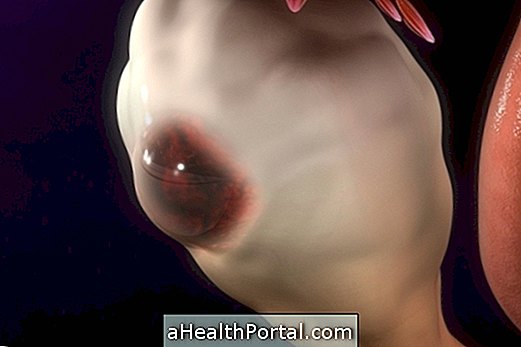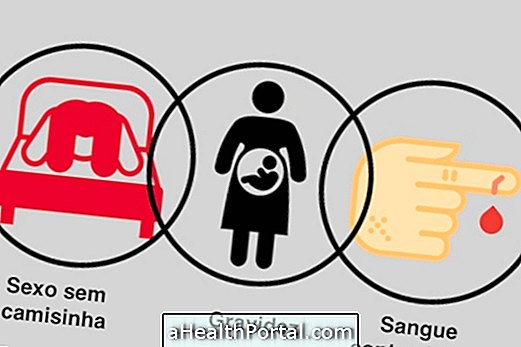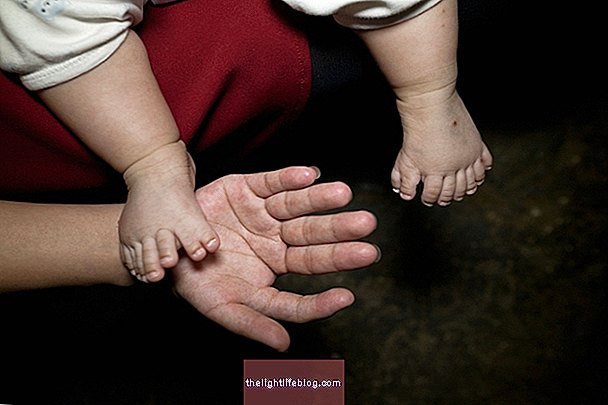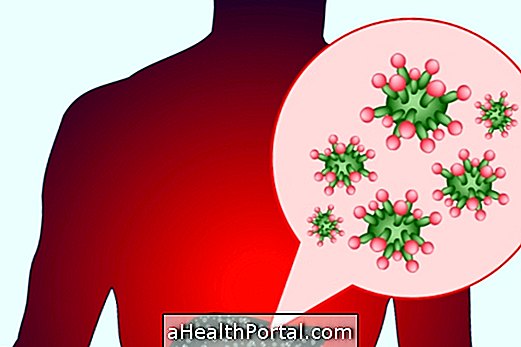Endometrioma is a type of cyst in the ovary, filled with blood, which is more frequent during the fertile years before the menopause. Although it is a benign change, it can cause the appearance of some symptoms like pelvic pain and intense menstrual cramps, in addition to being able to affect the fertility of the woman.
In many cases, the endometrioma disappears after menstruation, but in women with endometriosis the cyst may remain, irritating the tissues of the ovary and leading to the onset of symptoms, which needs to be treated with pill or surgery, depending on the severity.

Main symptoms
The most common symptoms of endometrioma include:
- Intense abdominal cramps;
- Abnormal bleeding;
- Very painful menstruation;
- Dark vaginal discharge;
- Discomfort when urinating or defecating;
- Pain during intimate contact.
The onset and severity of these symptoms vary from woman to woman and therefore, each case should be evaluated individually by a gynecologist. However, if the pain is very severe or a very heavy bleeding occurs, it is advisable to go to the hospital immediately.
What Causes Endometrioma
The endometrioma arises when a piece of tissue lining the uterus, known as the endometrium, detaches itself and reaches the ovary, forming a small sac that grows and collects blood.
Normally, the endometrioma only grows when circulating hormones exist and, therefore, many women stop having endometrioma after the menstruation, when there is a sharp fall in the levels of these hormones. However, in the case of women with endometriosis, this process does not happen and, therefore, the cyst remains in the ovary and continues to irritate surrounding tissues.
When the endometrioma does not disappear, it continues to grow and may even multiply, affecting a larger area of the ovary, which can end up affecting the woman's fertility.
Is Endometrioma Cancer?
The endometrioma is not cancer and there is a very low probability of turning into cancer. However, severe endometrioma can cause several complications and even reappear after treatment.

Possible Complications
The main complication of the endometrioma is the decrease in the fertility of the woman, however, this is more frequent when the cyst is too large or the woman has more than one cyst. Usually changes that interfere with fertility include:
- The ovary can not produce mature eggs;
- The ova formed have a thicker wall that prevents sperm penetration;
- The fallopian tubes may have scars that make it difficult for the egg and sperm to pass.
In addition, some women may also have a hormonal imbalance that is at the base of the endometrioma, so even if the ovum is fertilized, it may have difficulty sticking to the wall of the uterus.
How is the treatment done?
Treatment of endometrioma depends on the severity of the symptoms and the size of the cyst. In many cases, treatment can be done only with the continued use of a contraceptive pill that prevents menstruation and, therefore, prevents the accumulation of blood within the cyst.
However, if the cyst is very large or if severe symptoms occur, the gynecologist may choose to have surgery to remove the affected tissue. However, if the cyst is too large or developed, it may be necessary to remove the entire ovary. Understand better when this type of surgery is done.
What is abdominal wall endometrioma?
Abdominal wall endometrioma may occur more frequently in women after cesarean section, near the scar.
Symptoms of abdominal wall endometrioma may be a sore tumor, which increases in size during menstruation. The diagnosis can be made through ultrasonography or computerized tomography.
The treatment of abdominal wall endometrioma is open surgery to remove the endometrioma and loosen the adhesions of the tissues.


















